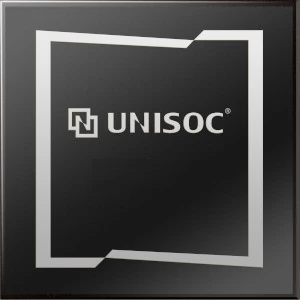MediaTek Dimensity 810 vs Unisoc Tanggula T770 5G
The Unisoc Tanggula T770 5G and the MediaTek Dimensity 810 are two processors that can be compared based on their specifications.
Starting with the CPU cores and architecture, the Unisoc Tanggula T770 5G features an architecture of 1x 2.5 GHz – Cortex-A76, 3x 2.2 GHz – Cortex-A76, and 4x 2.0 GHz – Cortex-A55. On the other hand, the MediaTek Dimensity 810 has an architecture of 2x 2.4 GHz – Cortex-A76 and 6x 2.0 GHz – Cortex-A55. Both processors have 8 cores and support the ARMv8.2-A instruction set.
In terms of lithography, both processors have a 6 nm lithography, which indicates that they have a similar manufacturing process. This can result in better power efficiency and performance compared to older generation processors.
The Unisoc Tanggula T770 5G has a TDP (Thermal Design Power) of 5 Watt, while the MediaTek Dimensity 810 has a TDP of 8 Watt. A lower TDP generally indicates better power efficiency and less heat generation.
Both processors feature a Neural Processing Unit (NPU), which enhances AI and machine learning capabilities. This can be beneficial for tasks like image recognition and voice assistants.
In terms of additional specifications, the MediaTek Dimensity 810 boasts a higher number of transistors with 12000 million, which can contribute to better overall performance.
In conclusion, both the Unisoc Tanggula T770 5G and the MediaTek Dimensity 810 have similarities in terms of their architecture, instruction set, lithography, and NPU capabilities. However, the Tanggula T770 5G has a lower TDP, while the Dimensity 810 has a higher number of transistors. Depending on the specific use case and preferences, users can choose between these processors based on their priorities for power efficiency and overall performance.
Starting with the CPU cores and architecture, the Unisoc Tanggula T770 5G features an architecture of 1x 2.5 GHz – Cortex-A76, 3x 2.2 GHz – Cortex-A76, and 4x 2.0 GHz – Cortex-A55. On the other hand, the MediaTek Dimensity 810 has an architecture of 2x 2.4 GHz – Cortex-A76 and 6x 2.0 GHz – Cortex-A55. Both processors have 8 cores and support the ARMv8.2-A instruction set.
In terms of lithography, both processors have a 6 nm lithography, which indicates that they have a similar manufacturing process. This can result in better power efficiency and performance compared to older generation processors.
The Unisoc Tanggula T770 5G has a TDP (Thermal Design Power) of 5 Watt, while the MediaTek Dimensity 810 has a TDP of 8 Watt. A lower TDP generally indicates better power efficiency and less heat generation.
Both processors feature a Neural Processing Unit (NPU), which enhances AI and machine learning capabilities. This can be beneficial for tasks like image recognition and voice assistants.
In terms of additional specifications, the MediaTek Dimensity 810 boasts a higher number of transistors with 12000 million, which can contribute to better overall performance.
In conclusion, both the Unisoc Tanggula T770 5G and the MediaTek Dimensity 810 have similarities in terms of their architecture, instruction set, lithography, and NPU capabilities. However, the Tanggula T770 5G has a lower TDP, while the Dimensity 810 has a higher number of transistors. Depending on the specific use case and preferences, users can choose between these processors based on their priorities for power efficiency and overall performance.
AnTuTu 10
Total Score
GeekBench 6 Single-Core
Score
GeekBench 6 Multi-Core
Score
CPU cores and architecture
| Architecture | 2x 2.4 GHz – Cortex-A76 6x 2.0 GHz – Cortex-A55 |
1x 2.5 GHz – Cortex-A76 3x 2.2 GHz – Cortex-A76 4x 2.0 GHz – Cortex-A55 |
| Number of cores | 8 | 8 |
| Instruction Set | ARMv8.2-A | ARMv8.2-A |
| Lithography | 6 nm | 6 nm |
| Number of transistors | 12000 million | |
| TDP | 8 Watt | 5 Watt |
| Neural Processing | NPU | NPU |
Memory (RAM)
| Max amount | up to 12 GB | up to 32 GB |
| Memory type | LPDDR4X | LPDDR4X |
| Memory frequency | 2133 MHz | 2133 MHz |
| Memory-bus | 2x16 bit | 4x16 bit |
Storage
| Storage specification | UFS 2.2 | UFS 3.1 |
Graphics
| GPU name | Mali-G57 MP2 | Mali-G57 MP6 |
| GPU Architecture | Mali Valhall | Mali Valhall |
| GPU frequency | 950 MHz | 850 MHz |
| Execution units | 2 | 6 |
| Shaders | 32 | 96 |
| DirectX | 12 | 12 |
| OpenCL API | 2.1 | 2.1 |
| OpenGL API | ES 3.2 | ES 3.2 |
| Vulkan API | 1.2 | 1.2 |
Camera, Video, Display
| Max screen resolution | 2520x1080@120Hz | 2160x1080@120Hz |
| Max camera resolution | 1x 64MP, 2x 16MP | 1x 108MP, 2x 24MP |
| Max Video Capture | 2K@30FPS | FullHD@30fps |
| Video codec support | H.264 (AVC) H.265 (HEVC) VP9 |
H.264 (AVC) H.265 (HEVC) |
Wireless
| 4G network | Yes | Yes |
| 5G network | Yes | Yes |
| Peak Download Speed | 2.77 Gbps | 2.7 Gbps |
| Peak Upload Speed | 1.2 Gbps | 1.5 Gbps |
| Wi-Fi | 5 (802.11ac) | 5 (802.11ac) |
| Bluetooth | 5.1 | 5.0 |
| Satellite navigation | BeiDou GPS Galileo GLONASS QZSS |
BeiDou GPS Galileo GLONASS |
Supplemental Information
| Launch Date | 2021 Quarter 3 | 2021 February |
| Partnumber | MT6833V/PNZA, MT6833P | T770, Tiger T7520 |
| Vertical Segment | Mobiles | Mobiles |
| Positioning | Mid-end | Mid-end |
Popular comparisons:
1
Qualcomm Snapdragon 8s Gen 4 vs Qualcomm Snapdragon 8s Gen 3
2
MediaTek MT6737 vs Google Tensor G2
3
Qualcomm Snapdragon 660 vs Qualcomm Snapdragon 7s Gen 3
4
Unisoc T9100 vs Samsung Exynos 990
5
Unisoc T8300 vs MediaTek Dimensity 6020
6
MediaTek Dimensity 800U vs Qualcomm Snapdragon 480
7
Apple A15 Bionic vs MediaTek MT6739
8
MediaTek Helio P60 vs Qualcomm Snapdragon 835
9
HiSilicon Kirin 990 4G vs Samsung Exynos 8895
10
Qualcomm Snapdragon 778G Plus vs Qualcomm Snapdragon 460

